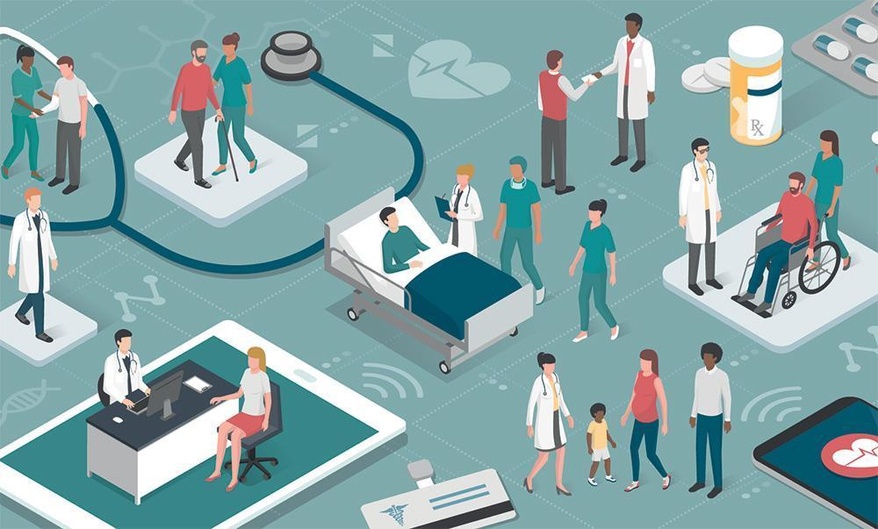
A career in information technology in healthcare is a great option if you're interested in technology and medicine. This field is in rapid growth and will need more qualified candidates to fill the many vacant positions. A degree can help you find work in various areas, such as law firms or health insurance.
The goal of health information technology is to keep patient data safe and easily accessible. The data can be used for healthcare outcomes, cost tracking, and other purposes. It's also useful for public health initiatives. Pharmaceutical companies use health data to create treatments. Health IT professionals can work in many fields, such as healthcare facilities and law firms.
Specialists in health information technology may interact with many people, including nurses, doctors, and subject matter experts. They help to design and test computerized medical records. Some of the most advanced positions require knowledge in programming and operating systems. An analyst in clinical systems will examine problems with electronic medical records systems. A clinical systems analyst is also familiar with hardware and software that are used in the healthcare industry.

The career of health information technology is great for people who are interested in business and computer technology. The benefits of a degree include a more secure career and a higher income. However, it is important to remember that HIT professionals do not directly interact with patients. They are often employed in offices.
Many hospitals, insurance companies, law firms, and other organizations are seeking qualified people to analyze and improve their healthcare data. You can collect healthcare data from many sources, including medical procedures and research studies. This data is used by medical professionals and insurance companies to track healthcare costs.
You can get started in this area by earning an associate's or bachelor's degree in information management. You can also take the course online with some programs. Part-time employment is possible, even if you're enrolled full-time in school. For those who go full-time, the program can be completed in around two years.
Health information technology is a good career choice for those who are interested in health and medicine, but want to keep their feet on the ground. This field is critical for the smooth running of healthcare facilities. This field offers the opportunity to explore new technologies and find innovative solutions to common problems. Although you may not directly care for patients, you can help them by offering advice and protecting their electronic health information.

Health information technology graduates can find many good-paying jobs. The US Bureau of Labor Statistics says that this field will grow and that it is a lucrative job for those who are prepared to make the leap.
FAQ
What is the difference in the health system and the health care services?
The scope of health systems goes beyond just providing healthcare services. They cover all aspects of life, from education to employment to housing and social security.
Healthcare services, however, are focused on providing medical treatment for specific conditions, such as diabetes or cancer.
They could also refer to generalist primary care services provided by community-based physicians working under the supervision of an NHS trust.
What does the expression "healthcare" refer to?
Health care refers to delivering services related to maintaining good physical and mental health.
What do you consider to be the most important public health issues of today?
Many people are suffering from diabetes, obesity, heart disease, cancer, and heart disease. These conditions account for more deaths annually than AIDS and car crashes combined. High blood pressure, strokes, asthma and arthritis are all caused by poor nutrition, exercise and smoking.
Statistics
- Consuming over 10 percent of [3] (en.wikipedia.org)
- Foreign investment in hospitals—up to 70% ownership- has been encouraged as an incentive for privatization. (en.wikipedia.org)
- For instance, Chinese hospital charges tend toward 50% for drugs, another major percentage for equipment, and a small percentage for healthcare professional fees. (en.wikipedia.org)
- About 14 percent of Americans have chronic kidney disease. (rasmussen.edu)
- Healthcare Occupations PRINTER-FRIENDLY Employment in healthcare occupations is projected to grow 16 percent from 2020 to 2030, much faster than the average for all occupations, adding about 2.6 million new jobs. (bls.gov)
External Links
How To
What is the Healthcare Industry Value Chain (or Value Chain)?
All activities that are involved in providing healthcare services for patients make up the healthcare industry value chain. This includes both the business processes in hospitals and clinics, as well the supply chains that connect them with other providers like doctors, pharmacists, insurers, manufacturers, wholesalers, distributors, etc. The result is a continuum which starts with diagnosis and ends in discharge.
The value chain consists of four major components.
-
Business processes - These are the tasks performed throughout the whole process of providing health care. For example, a doctor may perform an exam and then prescribe medication. Each step must always be done quickly and accurately.
-
Supply Chains – The entire network of organizations responsible for ensuring that the right supplies reach those who need them. A typical hospital has many suppliers. They include pharmacies as well lab testing facilities, imaging center, and even janitorial employees.
-
Networked Organisations - This is a way to coordinate all the entities. Hospitals are often composed of many departments. Each department will have its own set office and telephone number. Each department will have its own central point, where employees can get updates and ensure everyone is informed.
-
Information Technology Systems (IT) - IT is essential in order for business processes to run smoothly. Without it, things would fall apart quickly. IT can also be used to integrate new technologies into a system. Doctors can connect to a secure network connection in order to integrate electronic medical records into their workflow.